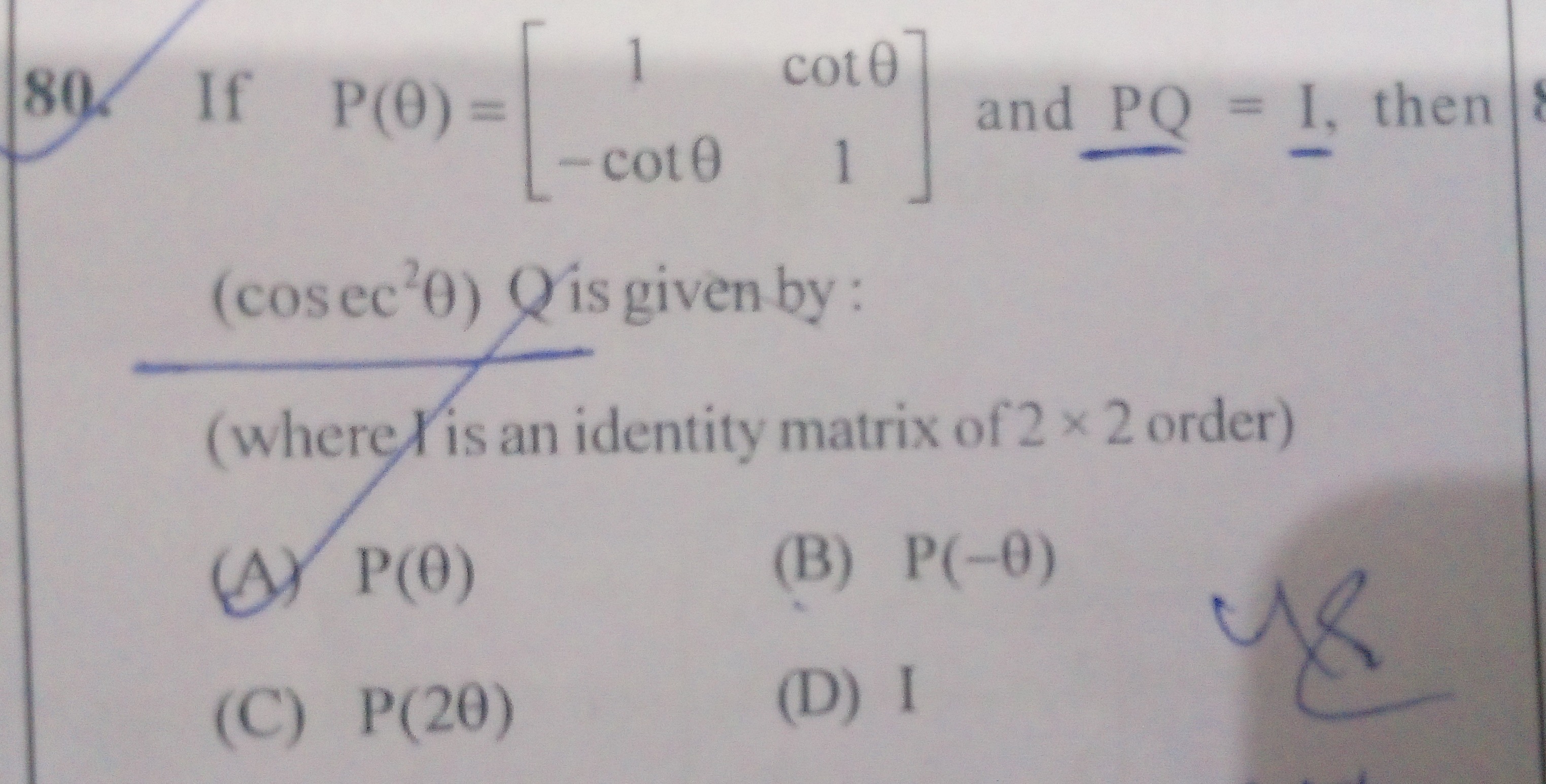Question
Question: If $P(\theta) = \begin{bmatrix} 1 & cot\theta \\ -cot\theta & 1 \end{bmatrix}$ and $\underline{PQ=I}...
If P(θ)=[1−cotθcotθ1] and PQ=I, then
(cosec2θ)Q is given by:
(where I is an identity matrix of 2×2 order)

A
P(θ)
B
P(−θ)
C
P(2θ)
D
I
Answer
P(−θ)
Explanation
Solution
Given
P(θ)=[1−cotθcotθ1],and PQ=I so that Q=P−1.
Step 1: Find det(P(θ)):
det(P(θ))=1⋅1−(−cotθ)(cotθ)=1+cot2θ=csc2θ.Step 2: Find the inverse:
P−1=csc2θ1[1cotθ−cotθ1].Thus,
Q=P−1=csc2θ1[1cotθ−cotθ1].Step 3: Multiply by csc2θ:
csc2θQ=[1cotθ−cotθ1].Step 4: Compare with P(−θ):
P(−θ)=[1−cot(−θ)cot(−θ)1]=[1cotθ−cotθ1].Thus,
csc2θQ=P(−θ).